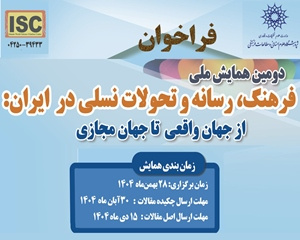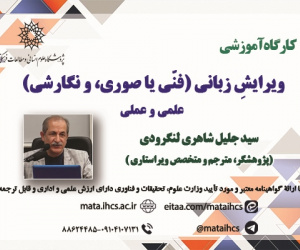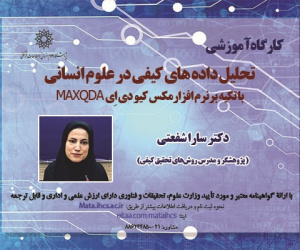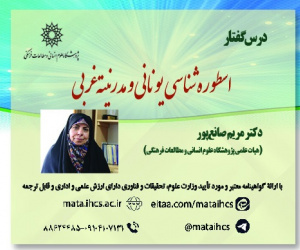زمان رستگاری در آخرالزمانی های سنگی بر گوری و شازده احتجاب (مقاله علمی وزارت علوم)
درجه علمی: نشریه علمی (وزارت علوم)
آرشیو
چکیده
«رستگاری» همواره دغدغه آشکار و پنهان آثار ادبی بوده است که گاه از آن به پایان خوش تعبیر شده و گاه در هیئت حیات پس از مرگ بیرون آمده است. پیگیری این مفاهیم در دو اثر سنگی بر گوری و شازده احتجاب نشان دهنده تفکیک دو مفهوم «پایان زمان» به مثابه آخرالزمان گرایی منفعل و «زمان پایان» به منزله آخرالزمان گرایی فعال است. دو رمان در میدانی سرشار از تنش میان این دو زمان شکل گرفته اند. در شازده احتجاب زمان دایره ای و تجدیدپذیر امید را در دل شخصیت اصلی می پرورد؛ حال آنکه نهایتاً جبر زمان تقویمی است که در هیئت مرگ رؤیاهای او را بر باد می دهد. در سنگی بر گوری راوی اقتدار زمان خطی را می پذیرد، اما در پی مقابله با آن به میانجی نوعی زمان دایره ای یا زمان کیفی نیست؛ بلکه رهایی و سعادت را در ایجاد رخنه در زمان خطی بازمی جوید؛ این رخنه در تمنای فرزندآوری تجلی می یابد.Apocalypse and Salvation: A Reading of Time in Jalal Al-e-Ahmad’s A Stone upon a Grave and Houshang Golshiri’s Prince Ehtejab
“Salvation” has always been both an implicit and an explicit concern in literary works; it has often appeared as a well-interpreted ending and sometimes under the guise of the afterlife. An investigation of A Stone upon a Grave and Prince Ehtejab in light of such concepts differentiates between “the end of time” as passive apocalypticism and “the end time” as active apocalypticism. The two works are located in the tension created between these times. Golshiri’s inexhaustible and cycloidal time inspires the protagonist, though death, as calendar time, blows his dreams away. By accepting the authority of linear time, Al-e-Ahmad forgoes confronting time through qualitative or cycloidal time, and seeks salvation through breaching the linear time, which is manifest in childbearing.
Extended Abstract1. IntroductionApocalyptic reading of literary works acts as a bridge that grants access to ideological horizons, expectations, and desires in the texts. A brief contemplation on the investigated works proves that Prince Ehtejab and A Stone upon a Grave were not chosen randomly.2. MethodologyThis article employs a descriptive-analytical approach; it describes concepts such as apocalypticism, salvation, and felicity, and analyses their manifestation in the two works. This approach avoids the unnecessary theoretical reading of literary works.3. Theoretical FrameworkInformed by the conceptualisations of Walter Benjamin and Jacques Lacan, this study explores language, death, salvation, and dream. It also investigates the topography and topology of salvation in light of Giorgio Agamben’s theorisations to theologically differentiate between two forms of time: Chronos and Kairos. Chronos refers to calendar time – time that can be measured. Chronos time moves on inexorably and methodically. It is the time which entails all human dreams and desires. Kairos, on the other hand, is about moments, not minutes. Often it is used to refer to the right moment, the opportune moment, or a defining moment. Kairos is time judged not by its duration, but by its importance and value. It is a window of time that requires an intentional, purposeful response. It is a time in which life-shaping decisions are made. It is a defining moment. Wise people recognize and respond to these kairotic moments.4. Discussion and AnalysisA Stone upon a Grave narrates the broken dreams and desires manifest in childbearing. A child who, regardless of its destiny, is a stone upon a parent’s grave. Golshiri, on the other hand, narrates a Qajar prince at home who has a dream of the same magnitude: his long-lost wife reincarnated as a maid who, by the order of the master, is turned into a lady. In light of these dreams and desires, the present study examines the two works and wonders how Al-e-Ahmad and Golshiri conceive salvation? To what extent is this salvation in line with the Salvation in the Day of Judgment? And to what extent is this (mostly foredoomed) salvation possible?5. ConclusionThrough this short study concerning the selected works, the authors tried to revive classical and traditional readings of literary works, which, according to them, is necessary for understanding ideological foundations in literary works. Bibliography Al-e-Ahmad, J. 1385 [2006]. Sangi bar Goori. Tehran: Ravaq. (A Stone Upon a Grave) [In Persian].Aristotle, 1388 [2009]. Darbareh-e Honar va Shear. Soheil, M. A (trans.). Tehran: Hekmat. (Poetics) [In Persian]. Benjamin, W. 1387 [2008]. Aroosak va kootooleh. Morad, F. P. and Omid, M (trans.). Tehran: Gam-e No. (Selected Writings) [In Persian]. Derrida, J. 1390 [2011]. Darbareh-e Grammatology. Mahdi, P (trans.). Tehran: Rokhdad-e No. (Of Grammatology) [In Persian]. Golshiri, H. 1384 [2005]. Shazdeh Ehtejab. Tehran: Niloufar. (Prince Ehtejab) [In Persian]. (Prince Ehtejab)Movalli, K. 1391 [2012]. Mabani-e Ravankavi-e Freud-Lacan. Tehran: Ney. [In Persian].








